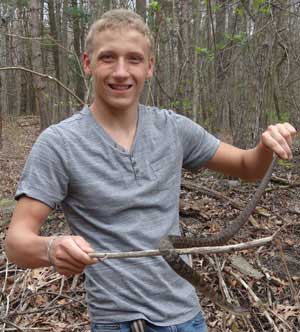“His name is Calvin, and he’s huge.”
That’s pretty much all freshman Hannah Foster had to say about the crawfish she netted while wading in a 29-degree creek at the Wittenbach/Wege Agriscience and Environmental Education Center.
After marveling with her classmates over Calvin’s girth and grip, he would be returned to the soggy habitat whence he came. Hannah had work to do.
After all, that Calvin lives in that particular creek has to mean something about the air, soil and water. Finding out what it means is the students’ mission.

Eight freshman biology classes — some 240 students — are taking turns spending time in the forests, prairies, wetlands and fields at the district’s 140-acre Wittenbach/Wege Center, across Vergennes Road from the high school.
Classes visit once a week to study ecology and biodiversity. Each class takes measurements of water, soil and plant samples and notes plants, insects and animals.
Their observations will be transferred to spreadsheets, compiled into a database and used by the center and the Land Conservancy of West Michigan, which manages the nature preserve on the 140-acre property.
“Having 240 sets of eyes here once a week over a period of months really helps,” said center Director Courtney Cheers. “The information they gather is going to be really useful in determining if, how and maybe why populations change over time.”
Biology teacher Heather DeJonge said the activity has been used as an assessment of students’ understanding of class material, which is particularly useful for those who don’t tend to do well in traditional forms of testing.
CONNECT









